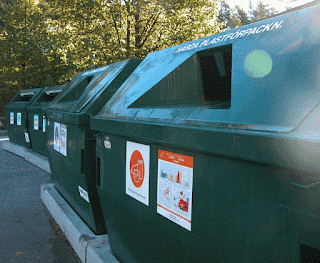Recently, Adrian Chiles wrote a strongly worded opinion piece about this topic for The Guardian newspaper: Drinking alcohol is bad for you — end of. Ignore the headlines that claim otherwise. Here, I will supplement his words with some ideas that he did not specifically cover.
First, I will start by quoting Chiles at length, because it is important to emphasize his ideas. He wrote:
It’s amazing how easy it is to persuade us that what we want to be true is true. Consider a typical headline to a story covered with great enthusiasm by many major news organisations this week: “Moderate alcohol consumption may lower stress, reduce heart disease risk, study finds.” Enthusiastic drinkers, drowning in a dark sea of health warnings, will cling on to such words as stricken sailors might hold on to the hull of their capsized boat.
They will turn a blind eye to the facts of the story, although even the headline itself, with its “may” and its “study finds”, suggests this scientific revelation isn’t quite the slam dunk we might be hoping for. Once the study’s methodology and conclusions are outlined, it’s clear that the whole thing falls into the category of quite interesting, rather than this changes everything. But who needs that level of detail? If I’m so minded, there’s as much information in the headline as I’m ever going to want or need to support my long-cherished pet theory about drinking. “I knew it! I told you so! Drinking helps me deal with stress, ergo it eases the strain on my poor ticker, therefore I’ll live longer and more happily.” I’ll file this fact away along with that one about red wine being good for you, as good as a health drink.
On the other side of the argument, to counter all this, the public health lobby takes an ever more severe position. The World Health Organization is now saying that when it comes to alcohol consumption, there is no safe amount that does not affect health. While this might be technically true, it also has an absurdity to it. As David Spiegelhalter, then professor for the public understanding of risk at Cambridge University, pointed out when England’s chief medical officer said something similar in 2018: “There is no safe level of driving, but the government does not recommend that people avoid driving. Come to think of it, there is no safe level of living, but nobody would recommend abstention.”
My contributed addition in this current post is to point out a publication by Su Golder & Jim McCambridge: Alcohol, cardiovascular disease and industry funding: A co-authorship network analysis of systematic reviews.
They studied a set of 60 published reviews concerning cardiovascular disease (CVD) and alcohol, written by a total of 231 unique authors. There were 14 reviews undertaken by authors with histories of alcohol industry funding, including 5 that were funded directly by the alcohol industry itself. The remaining 46 had no such funding identified.
Their conclusion was:
Nearly a quarter (23%, 14/60) of systematic reviews undertaken on the impact of alcohol on CVD had a known connection to alcohol industry funding. These formed distinct co-authorship subnetworks within the literature. [An example is shown above, where each point represents an author and the lines represent who they worked with.] All reviews by authors with histories of alcohol industry support identified a health protective effect of alcohol, whereas those with no known history of support were approximately evenly divided, with 54% (25/46) concluding there was evidence of health protective effects.
The reviews associated with the industry were more likely to study broader CVD outcomes, as opposed to more specific CVD outcomes such as hypertension or stroke, had a higher number of included studies, and were more influential, being more likely to be cited by others. ... Over time the proportion of systematic reviews on CVD and alcohol authored by those with histories of funding by industry has declined, and there has been an increase in reviews more likely to conclude there is no evidence for cardio-protection.
The citations data attest to the enduring influence of the idea that alcohol may be good for the heart within scientific communities, as well as having a hold on public and policy perceptions of alcohol. This idea has been assiduously promoted by the alcohol industry, for whom it looks clearly important to political strategies. This study demonstrates that there is a need not only to resolve the long running controversy, but also to pay attention to the actions of the alcohol industry in influencing the science. It is striking how little we know about a subject that does such large and growing damage to global health.
So, there you have it. Who funds the research has a big influence on what the published results will be. Quite possibly, you do not bite the hand that feeds you, even in academia! Anyway, as Adrian Chiles noted: You can often ignore the headlines, but don't ignore the details.












